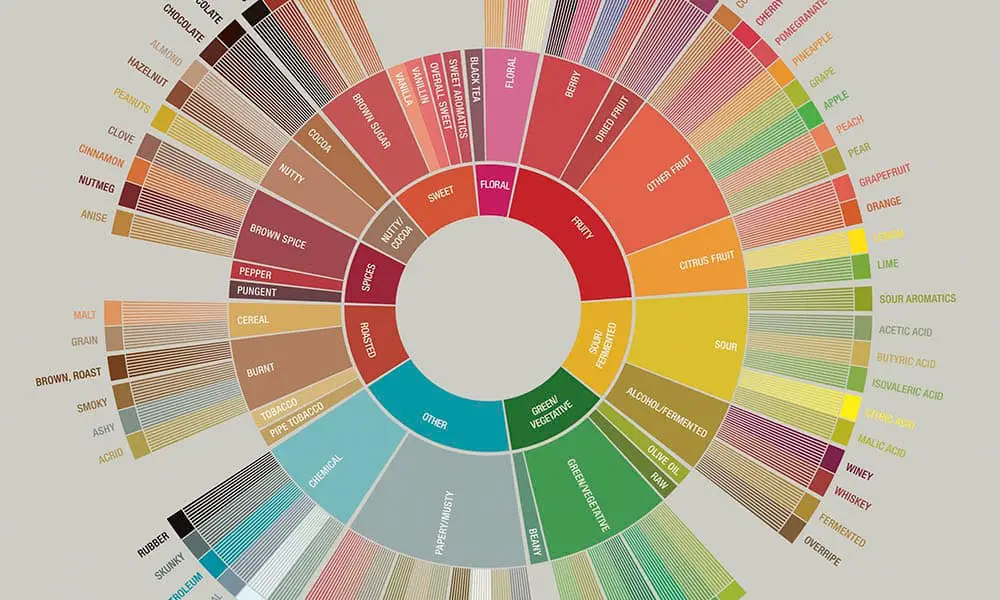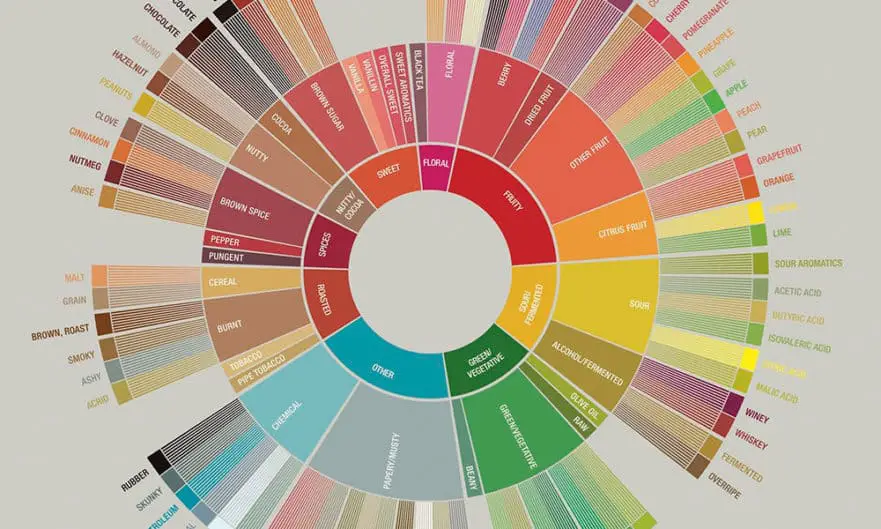
Coffee is a global obsession, but its flavors shift dramatically depending on where the beans are grown. From Kenya’s juicy, tropical notes to Indonesia’s earthy depth, each coffee-producing country offers a distinct taste shaped by its soil, climate, and traditions.
Whether you’re picking beans at a local roaster or experimenting with home roasting, knowing these flavor profiles can guide your choices. This article explores the unique characteristics of coffee from key growing regions, highlighting what makes each special and what to expect in your cup.
Why Coffee Flavors Vary
Coffee’s taste is influenced by several factors: soil composition, altitude, climate, coffee variety, and processing methods like fermentation, roasting, and brewing. These elements, often called terroir, give each region its signature profile. For example, volcanic soil in Kenya adds brightness, while Indonesia’s humid climate enhances earthiness.
Processing—wet (washed) or dry (natural)—also plays a role, with washed coffees often cleaner and natural ones fruitier. Roasters and brewing methods further shape the final flavor, but certain tastes consistently emerge from specific countries. Below, we break down the profiles of major coffee-growing nations, based on your guide and additional insights.
Kenya: Bold and Juicy
Kenyan coffees are a favorite among coffee enthusiasts for their vibrant, mouth-puckering qualities. Grown at high altitudes (1,500–2,100 meters) in volcanic soil, varieties like SL-28 and SL-34 thrive without shade, intensifying their flavors.
A unique post-fermentation soak, lasting up to 24 hours, enhances their savory-sweet character. Expect a tropical burst—think tomato-like acidity or black currant tartness—with a juicy, full-bodied feel. These coffees shine in pour-over brews, where their bright, fruity notes stand out.
Uganda: Rustic and Fruity
Uganda’s coffees, often grown in the Rwenzori Mountains, balance sweetness and wildness. The dry fragrance carries a clean lemon-cookie scent, with chocolate biscuit notes in the grounds and plum-like fruit in the wet aroma. A woodsy, rustic edge lingers, adding complexity.
These beans, typically washed, offer soft fruitiness and medium body, making them versatile for drip or espresso. Uganda’s growing specialty coffee scene is gaining attention, with smallholder farmers producing increasingly refined lots.
Indonesia: Deep and Earthy
Indonesian coffees, particularly from Sumatra and Sulawesi, are known for their heavy, earthy profiles. Sumatra Mandheling, often dry-processed, delivers low acidity, full body, and rich earthiness, with smoky, toasted flavors in darker roasts.
Notes of unsweetened cocoa or mushrooms create a savory, herbaceous finish. Sulawesi Tana Toraja, a microlot coffee, offers melted butter smoothness, tangy acidity, and complex chocolate-nut-herb flavors. Indonesia’s wet-hull processing, unique to the region, amplifies these deep, meaty characteristics, making these beans ideal for espresso blends.
Rwanda: Sweet and Intense
Rwanda’s bourbon variety coffees, like Kigeyo Bourbon Mayaguez, are meticulously hand-picked for ripeness, resulting in intense, sweet flavors. Grown at 1,400–1,900 meters, these beans combine savory caramel notes with juicy acidity, often reminiscent of ripe fruit.
Washed processing enhances their clean, bright profile, making them a standout in filter brews. Rwanda’s coffee industry, rebuilt after the 1994 genocide, now produces some of Africa’s finest beans, with cooperatives ensuring quality and sustainability.
Ethiopia: Diverse and Expressive
As coffee’s birthplace, Ethiopia boasts unmatched biodiversity, with thousands of wild, uncategorized varieties. Grown at 1,500–2,200 meters, its beans vary widely due to processing differences. Naturally processed coffees, dried with the cherry intact, offer syrupy body and dense berry flavors like blueberry or strawberry, often with a wine-like richness.
Washed coffees, stripped of fruit within 12 hours, lean floral and tea-like, with jasmine or lemongrass notes and a lighter, drier palate. Regions like Yirgacheffe and Sidamo are globally renowned, making Ethiopian coffees a must-try for adventurous tasters.
Central America: Balanced and Approachable
Central America, including Guatemala, Costa Rica, and Honduras, produces coffees that define North American preferences due to proximity and consistent quality. Grown at 1,200–1,800 meters, these beans benefit from similar climates and wet processing.
Guatemalan coffees offer apple-like malic acidity and soft chocolate sweetness, while Costa Rican beans, often Tarrazu, bring bright citrus and caramel notes. Honduran coffees lean toward cherry-like fruitiness with buttery pastry undertones. Their balanced, mild flavors make them perfect for beginners or espresso blends.
South America: Classic and Sweet
South America, led by Colombia, sets the standard for familiar coffee flavors. Colombia, a top global producer, delivers mellow acidity, strong caramel sweetness, and nutty undertones in its Supremo and Excelso grades.
Peruvian coffees mirror this profile, with medium body and subtle fruitiness. Grown at 1,000–1,800 meters, these washed beans are smooth and approachable, ideal for drip coffee. Their clean, sweet taste resonates with North American drinkers, often evoking cozy morning routines.
Brazil: Heavy and Nutty
Brazil, the world’s largest coffee producer, stands out for its volume and variety. Pulp natural or natural-processed beans, grown at 800–1,350 meters, often carry a peanutty quality and heavy body, with chocolate and spice notes.
These traits make Brazilian coffees, like Santos or Cerrado, staples in espresso blends. Their lingering, less clean aftertaste suits bold brewing methods like French press. Brazil’s vast output ranges from commodity-grade to specialty microlots, offering something for every palate.
Hawaii: Rustic and Sweet
Hawaiian coffees, particularly Kona from the Big Island, are grown in volcanic soil at 300–800 meters. Their dry fragrance hints at muted fruit and cocoa powder, with wet aromas of maple syrup, dark honey, and chamomile. Low acidity, rustic sweetness, and medium body define the cup, with sweet butter and grain notes. These beans, often wet-processed, are prized for their smooth, approachable profile, though high demand makes authentic Kona expensive.
Jamaica: Mild and Nuanced
Jamaica’s Blue Mountain coffee, grown at 900–1,700 meters, is celebrated for its balanced, mild profile. Wet-processed beans offer good body, soft nutty flavors, and herbal notes like chamomile or spice. Floral aromatics and a clean aftertaste make it a premium choice, often reserved for special occasions. Its “island profile” smoothness suits pour-over or cold brew, though limited production keeps prices high.
Yemen: Exotic and Spicy
Yemeni coffees, grown at 1,200–2,400 meters in arid conditions, are intensely aromatic. Their dry fragrance mixes leather, dried herbs, and sandalwood, while the cup delivers dark sweetness, caramel, and spiced chocolate. Notes of cardamom, ginger, and dark berries add complexity, with a peppery finish. Natural processing enhances their exotic, molasses-like character, making them a favorite for adventurous drinkers using Aeropress or siphon methods.
Costa Rica: Bright and Citrusy
Costa Rican coffees, often from Tarrazu or Tres Rios, are grown at 1,200–1,800 meters in volcanic soil. Wet processing and honey processing (a hybrid method) yield bright, citrusy flavors like orange or grapefruit, paired with caramel or honey sweetness. Their clean, crisp acidity makes them ideal for pour-over or cold brew. Costa Rica’s focus on sustainability and micro-mills ensures high-quality, traceable beans.
The Role of the Roaster
While these profiles offer a starting point, the roaster’s skill is pivotal. Light roasts preserve a bean’s origin flavors, like Kenya’s tropical notes, while dark roasts emphasize smoky or chocolatey tones, as in Sumatran coffees. Home roasters can experiment to highlight desired traits, but professional roasters often tailor the roast to balance acidity, body, and sweetness. Brewing methods—drip, espresso, or French press—also amplify or mute certain flavors, so your choice matters.
Navigating Global Coffee Flavors
Understanding these flavor profiles helps you pick beans that suit your taste, whether you’re buying pre-roasted or sourcing green coffee for home roasting. Kenya and Ethiopia offer bold, fruity adventures, while Central and South America provide comforting balance. Indonesia and Yemen cater to those craving earthy or exotic notes. Next time you have a cup, consider the country behind it—its soil, traditions, and processing shape every nuance. With this guide, you’re ready to explore coffee’s global diversity, one brew at a time.

